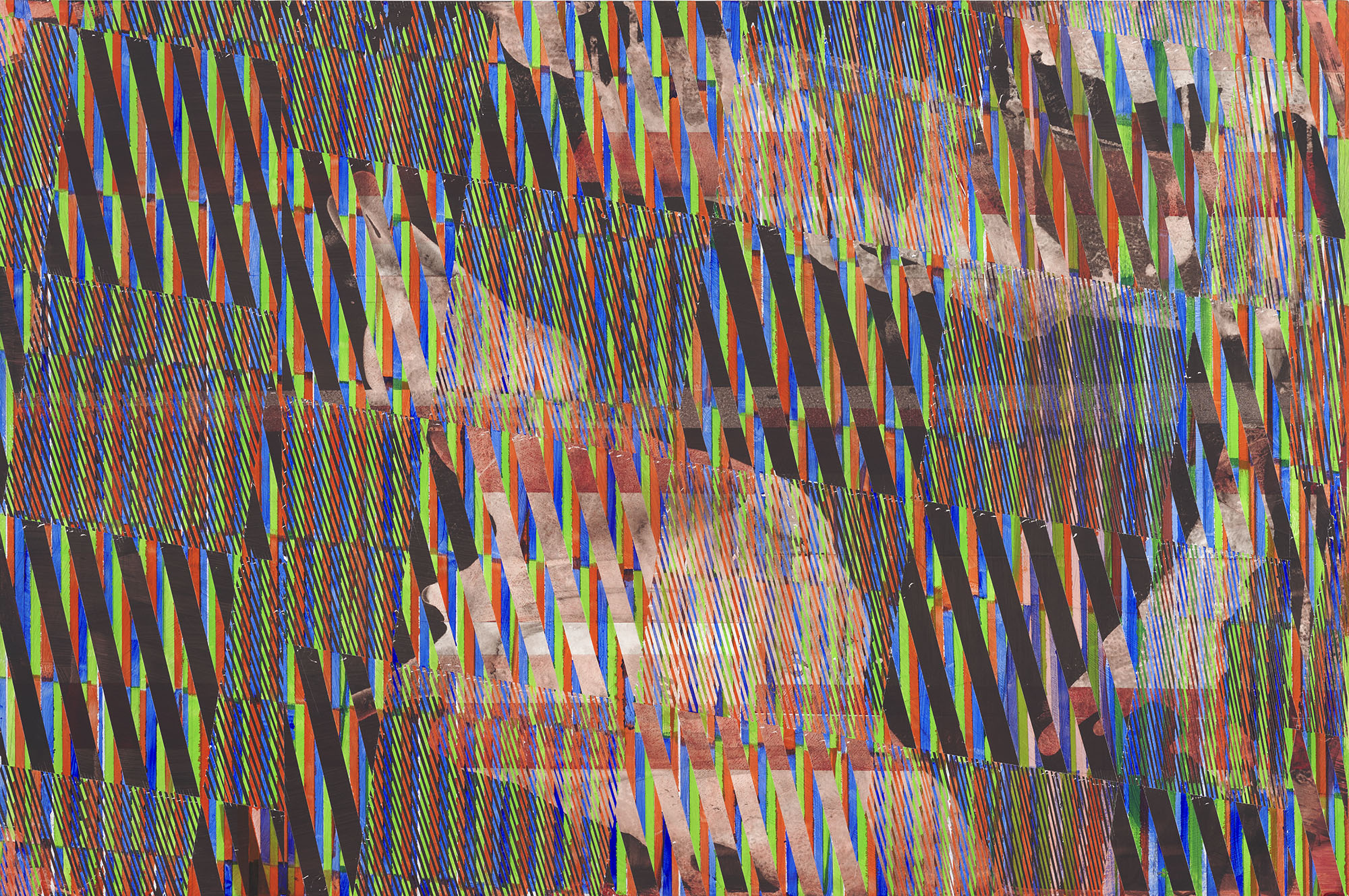Christof John
August 25 – October 4, 2024
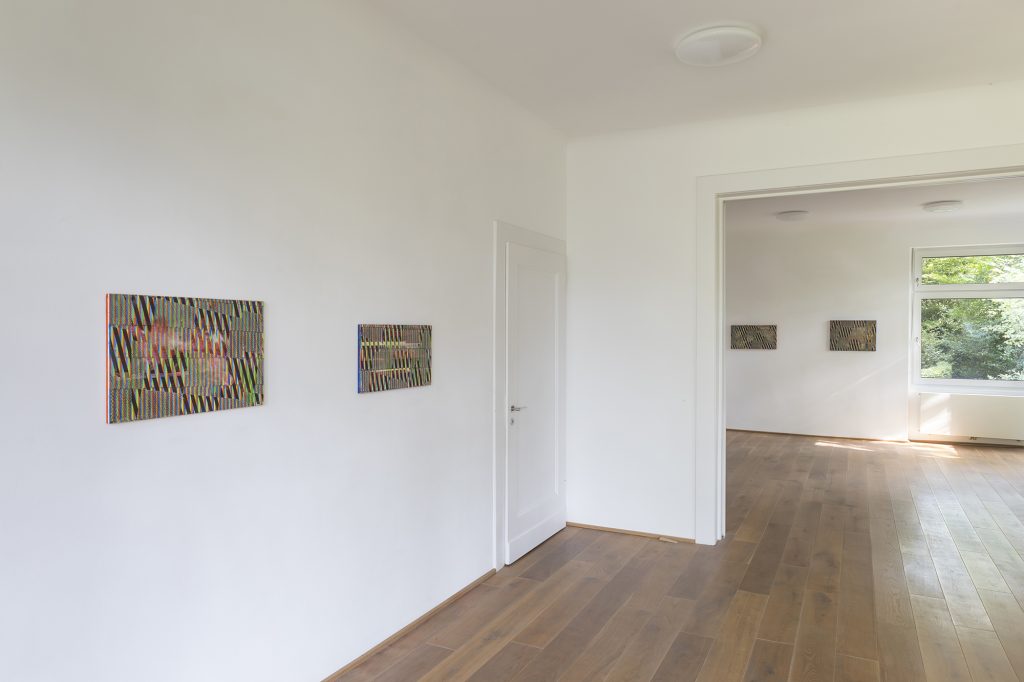
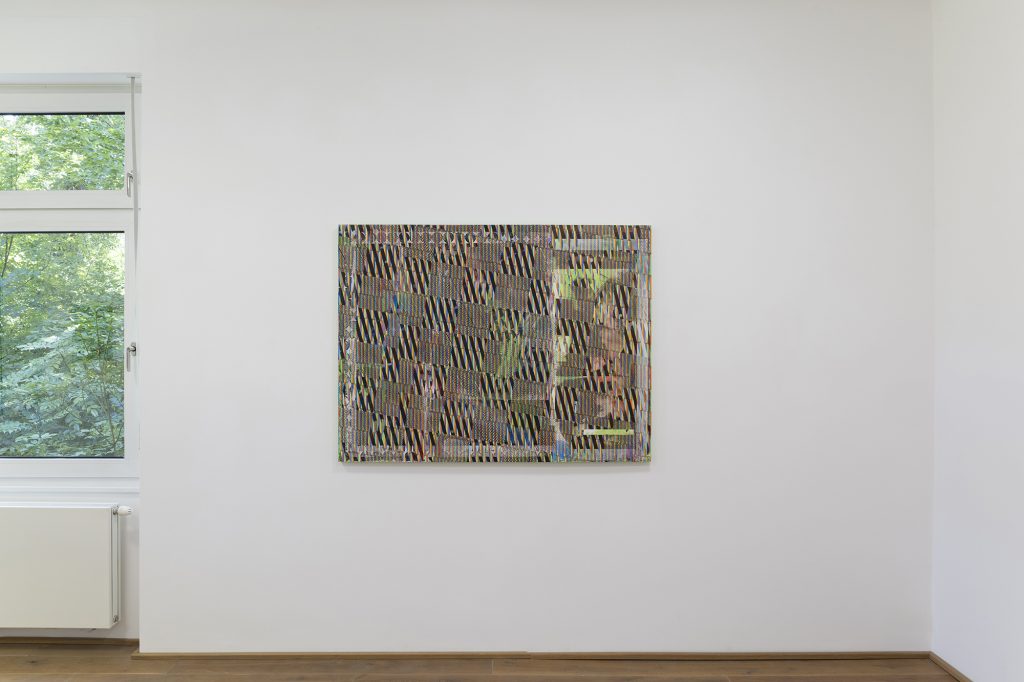
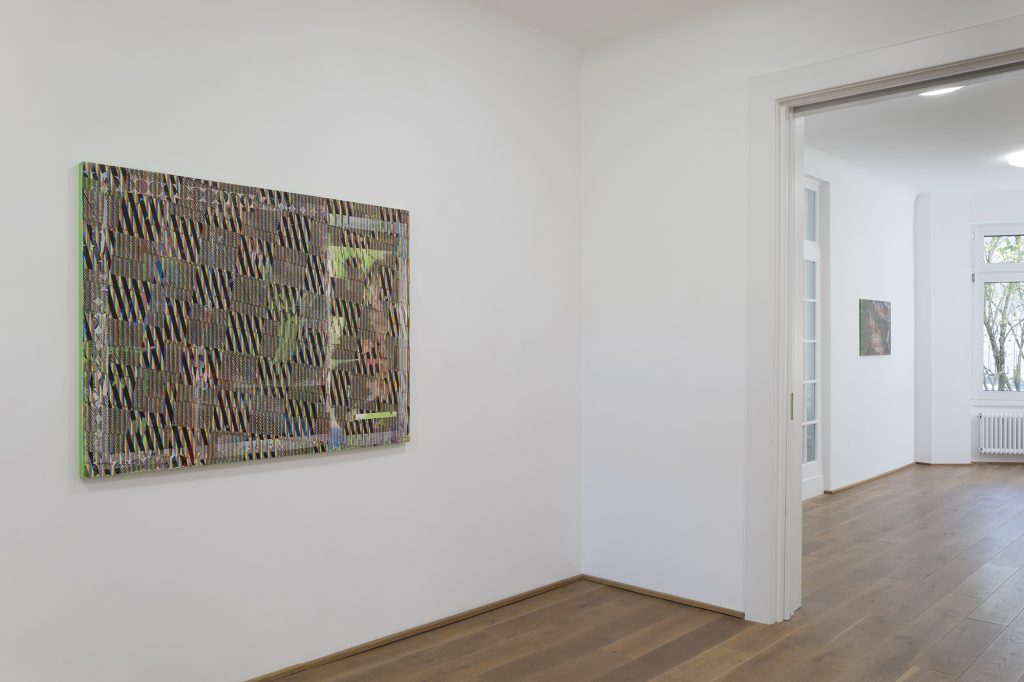
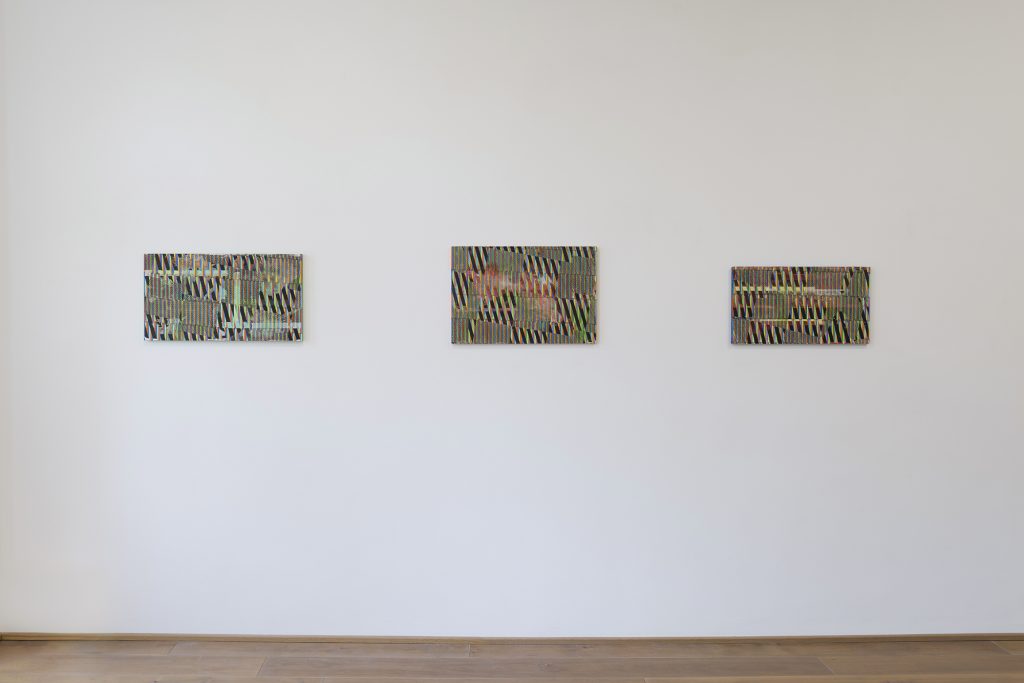
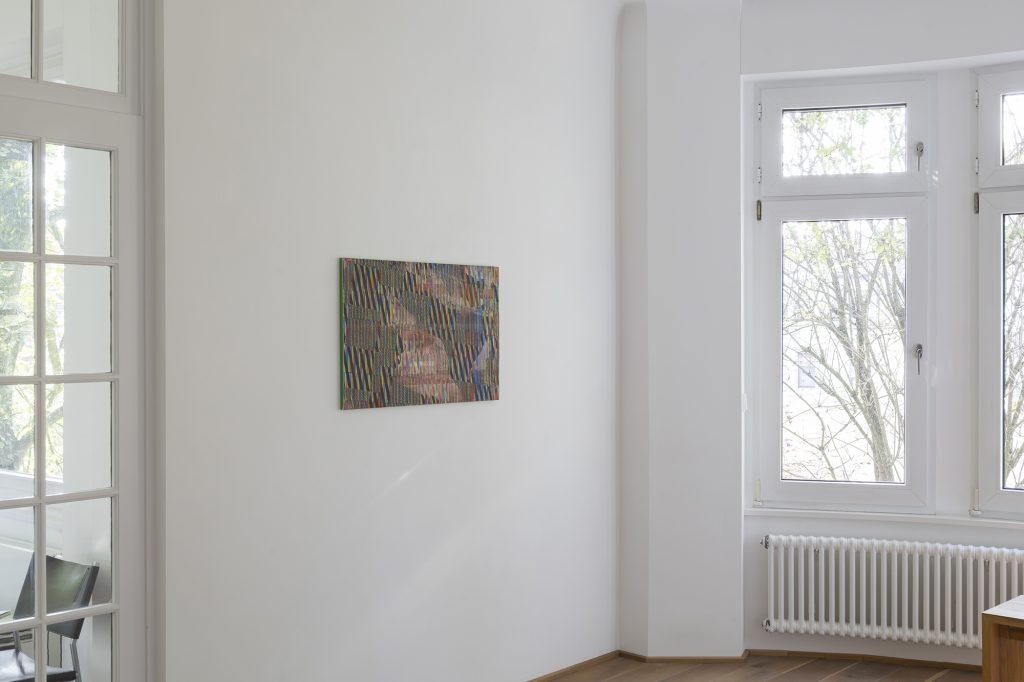
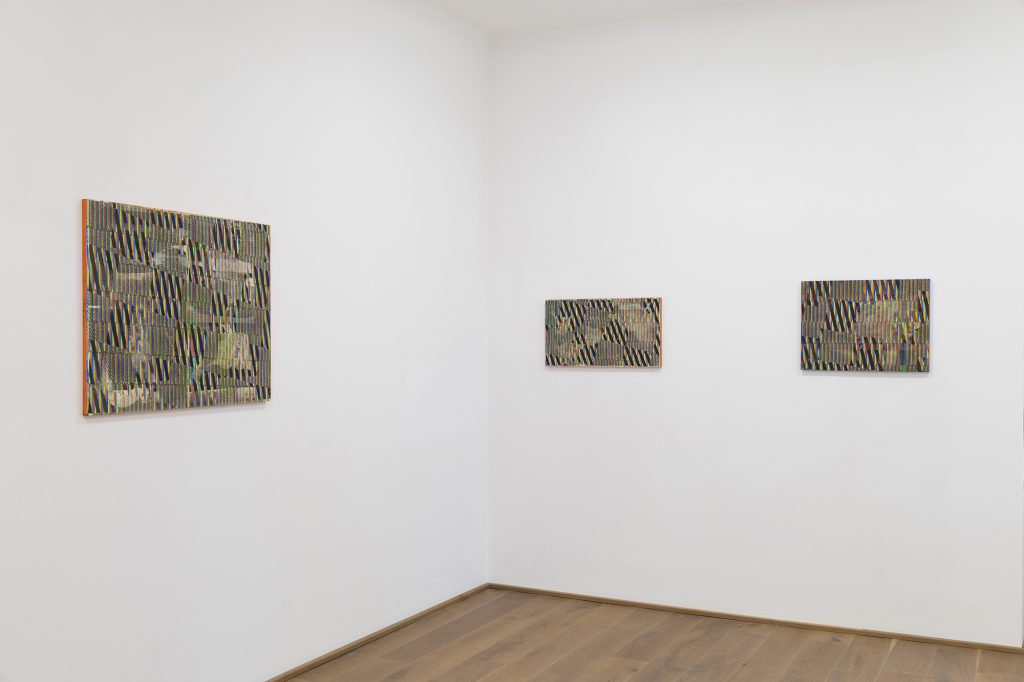
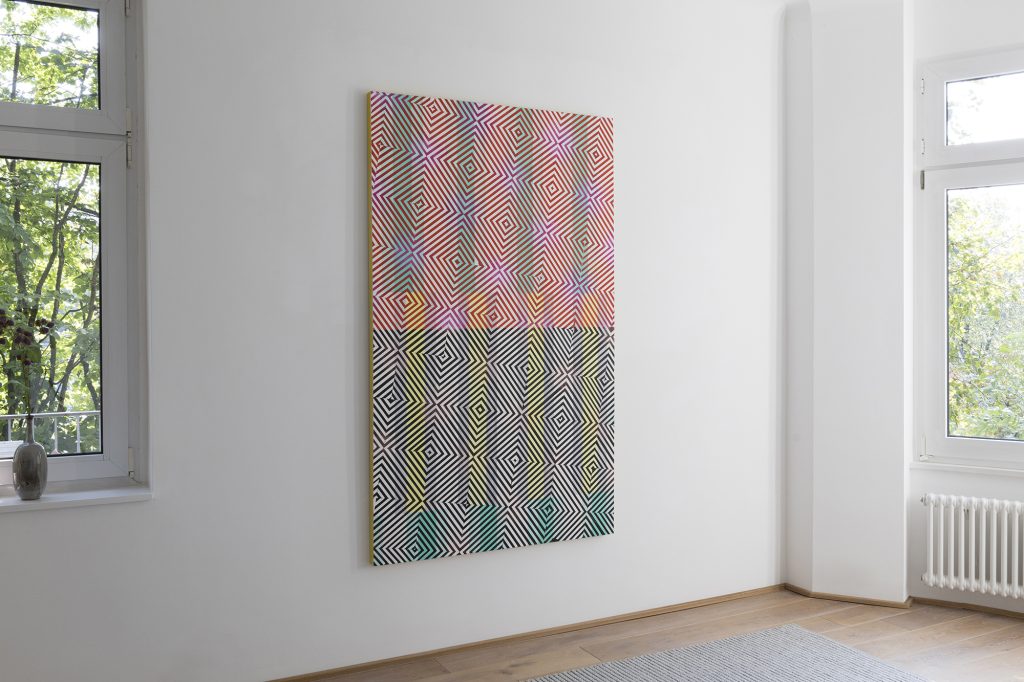
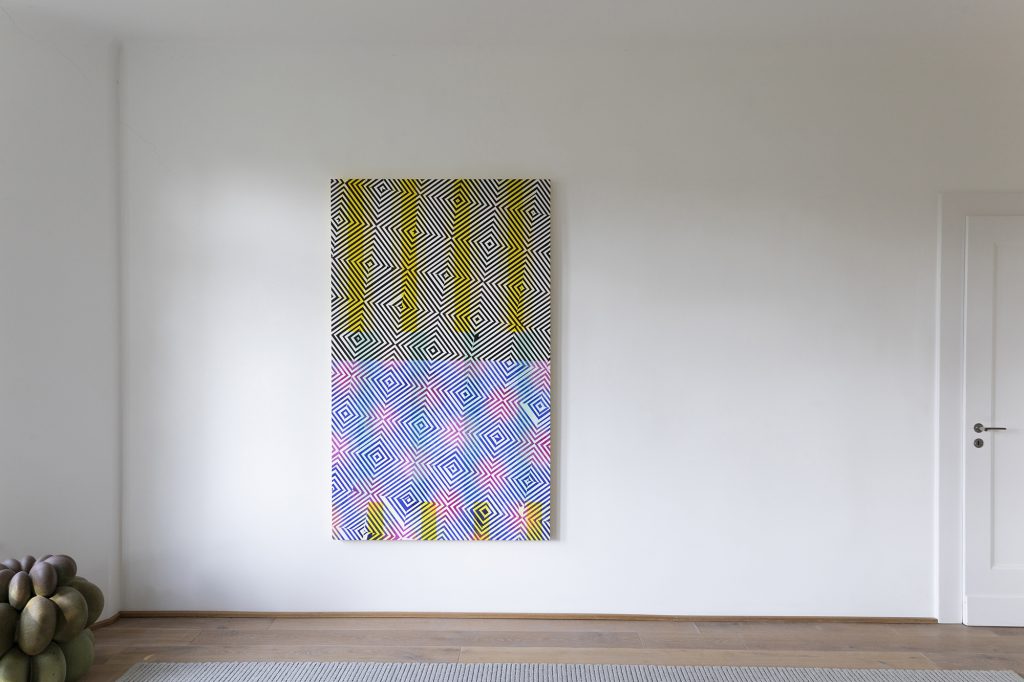
Photos: Dirk Wüstenhagen
The artistic world of Christof John appears to be driven by formal painting decisions. What initially seems precise and exact is subtly marked by minimal deviations. Patterns reveal gaps, line repetitions vary in width, and transitions suddenly introduce directional changes. Geometric, objective elements acquire organic, subjective qualities; bright areas abruptly turn dark, and hardness shifts to softness and delicacy. Upon closer inspection of these apparent coincidences, one discovers a system that provokes underlying contradictions. This leads us to question whether the formal is purely formal or whether it conceals content that resonates more with contemporary human experiences and realities than its appearance suggests.
The new series, formally titled TM, is dominated by the contrast between vertical or steeply diagonal strokes of color and simultaneously extended horizontal zones. The vertical strokes, varying in width, are colorful, composed of primary colors such as blue, red, or green, and sometimes black. The black strokes establish a dominant structural framework. The horizontal zones, in contrast, emerge from darkness into luminous, bright areas, suggesting an escape from rigid black stagnation. Unlike the flat strokes, these zones evoke a sense of landscape and spatial expansiveness. While the strokes maintain relative color homogeneity and strong intensity, their application is thin, sometimes nearly translucent. This intensity enhances the geometric and constructive aspects. The horizontal zones, however, are characterized by free painterly modulations that stand in opposition to this geometry.
This approach diverges from the Op Art of the 1960s and its revival in recent years by younger artists. Rather than focusing on the new modernist technological world and its external appearances, John emphasizes the human condition within a world shaped by humanity itself.
At first glance, it might not seem obvious to associate upright strokes with the human upright stance or diagonal lines with the body’s ability to perform various tasks through mobility, particularly with the hands. Yet, the serial rhythm of these strokes hints at the serial rhythms of our production-driven society and the varying roles we occupy within it. John’s strokes feature sharp contours, reminiscent of the contours of objects we create or the rigid, smooth shells we clothe ourselves in. From a distance, these can coalesce into a single stroke. This abstraction has often been explored in early 20th-century art as well as in media representations.
John does not seem to address individual people or objects in his paintings with their starkly defined contours. Instead, he engages with the broader realm of social interaction—marked by recurring patterns of interaction, multiplication, barriers, divisions, grids, and breakthroughs.
4o This world of interaction is not a rigid system but one constantly infiltrated by subtle changes. Today’s human world thrives on the contradiction between rigid production frameworks and the simultaneous softening of these frameworks through human interaction. From this perspective, John’s paintings can be interpreted as experiential realms of human interaction.
Another aspect of his TM series is its reflection on mediality. For today’s younger generation, the experience of test patterns at the end of a television broadcast is largely unfamiliar, as mediality has reached a point where broadcasting never truly ends. In earlier times, television programming concluded with a test pattern—a rigid, strictly regulated color structure of vertical and horizontal lines and variably wide fields of primary colors. This test pattern was a visible representation of the system behind the images being generated. Yet, it was never completely stable; slight, wavering impulses caused it to tremble and distort. Changes in electrical current made the forces driving these shifts perceptible.
John’s visual worlds depict similarly complex structures. The shifts within them reveal that they are dynamic force fields and zones of friction. However, his paintings do not explicitly identify the nature of these forces or who—or what—might be behind them. Ultimately, though, these shifts point to the human world of interaction, where each individual is subject to systemic pressures but also capable of instigating subtle changes.
When we describe John’s paintings as depicting complex systems, this description inherently carries an expectation: that such complexity could be dissected into individual components or a blueprint of its composition. Yet, this is precisely what cannot be achieved with his works. While we may decipher individual patterns within the paintings, any attempt to trace the rhythm of these patterns reveals their imperceptible transitions into other motifs. There is no single key to unlocking their full meaning; instead, one must continually seek new keys, starting over each time.
Engaging with John’s paintings evokes a fundamental experience of contemporary life: there are no clear, predetermined paths to understanding our world. In grappling with his works, we repeatedly find ourselves beginning anew, entering at different points, drawn into a labyrinth of images. We become increasingly ensnared, unable to find a way out or uncover an innermost chamber or core. John’s paintings articulate this sense of disorientation amidst the vast diversity of today’s interactional worlds.

